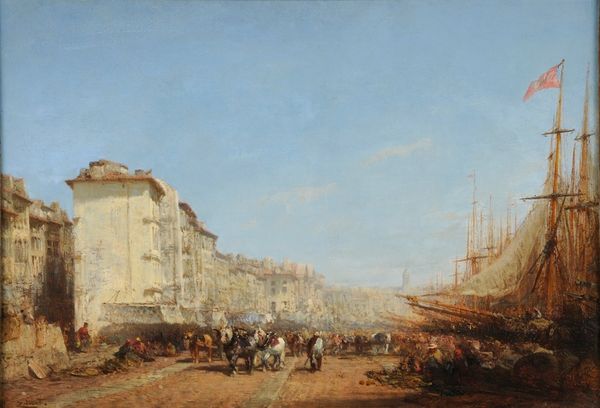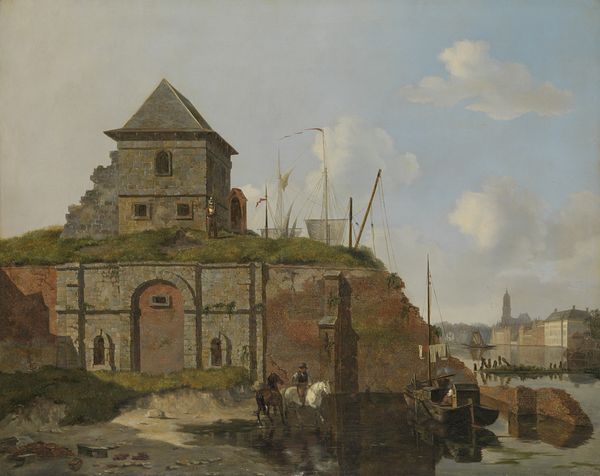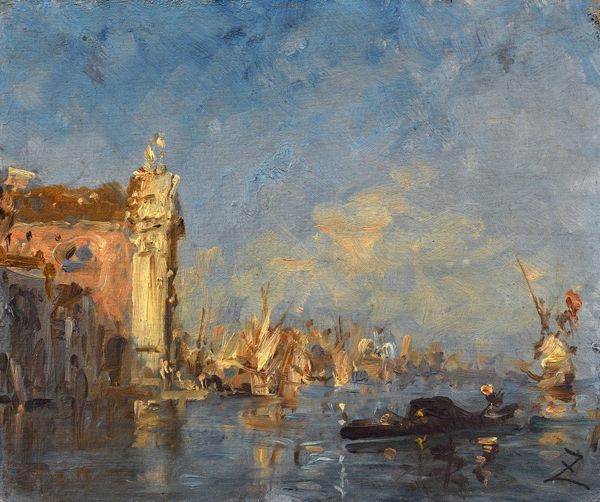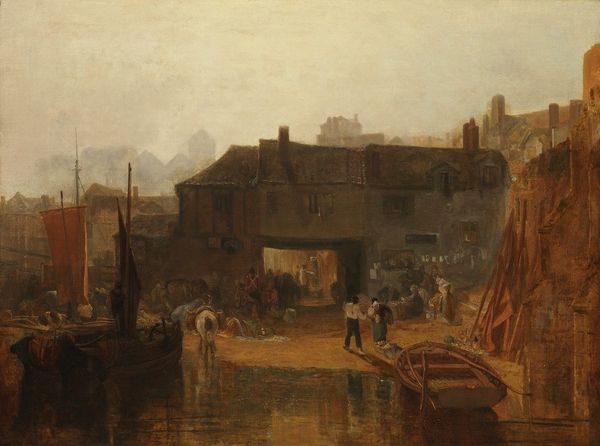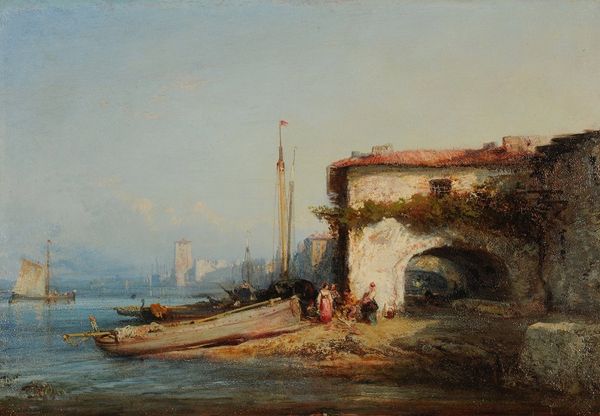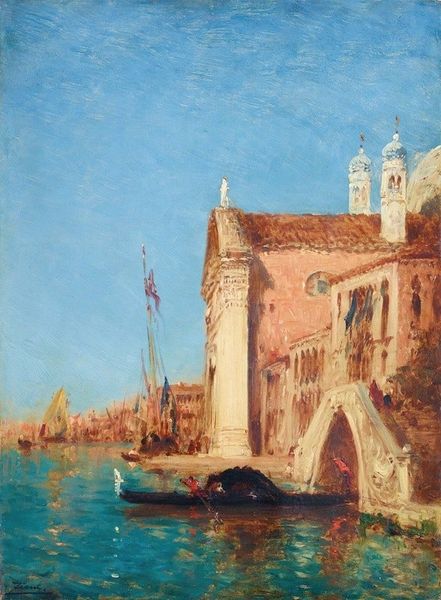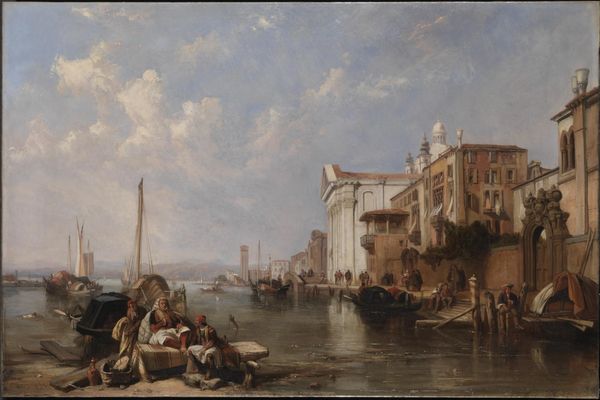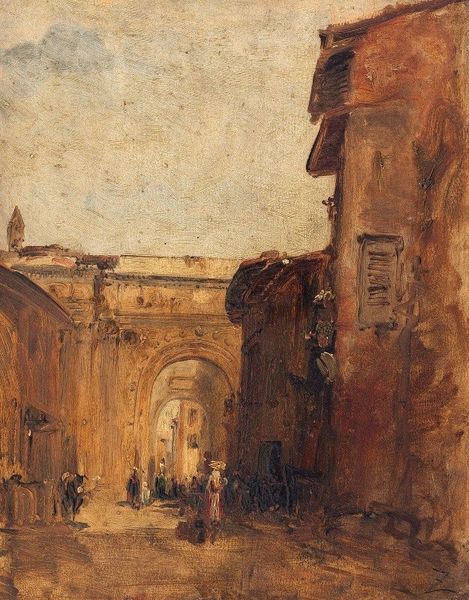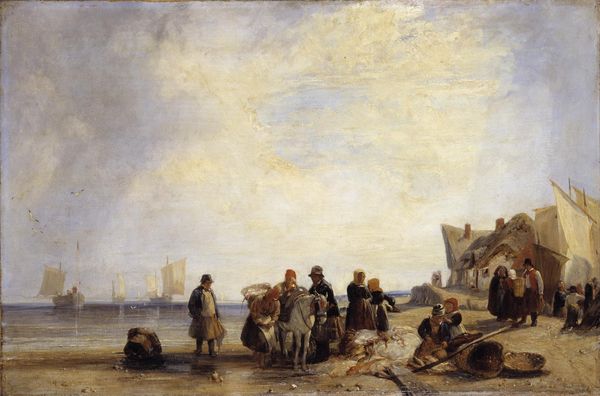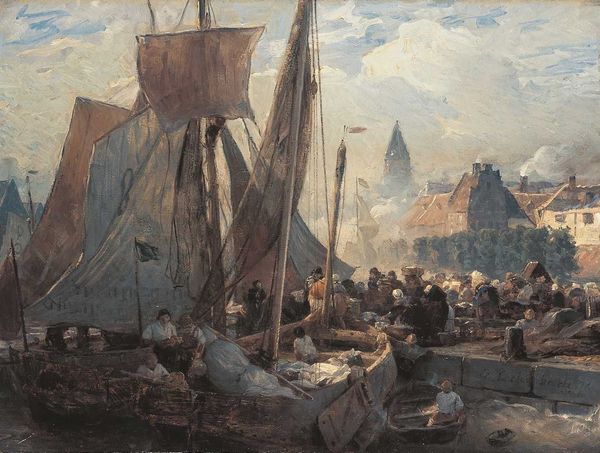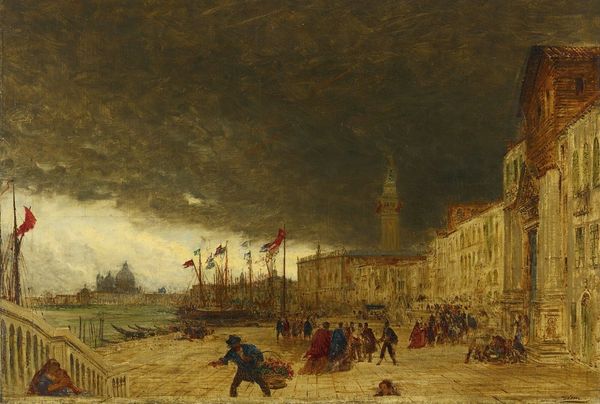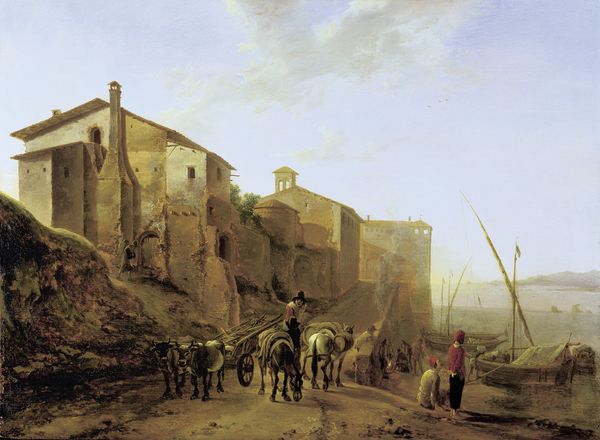
Copyright: Public Domain: Artvee
Editor: Here we have Félix Ziem’s “Le quai Saint-Jean à Marseille,” painted between 1890 and 1895, using oil on canvas. I find it quite dreamlike – a bustling port scene, yet somehow still and serene. How do you interpret this work? Curator: Let us observe the composition first. Note how the artist has divided the canvas, with the architecture on the left serving as a counterweight to the masts of the ships on the right. The light, pale tones unify the composition and provide balance to the scene. How does this contrast in light create balance? Editor: Good point. It draws your eye across the scene, like following a breath. I hadn't considered how the building leads us to the open water, with a single tower as a landmark. The figures in the lower half create almost a second painting, as though it is split in two distinct zones, that creates a balanced harmony. Curator: Precisely! The layering of light, then the vertical elements within the layering, offers balance. Think about the painterly texture too. Ziem employs loose brushstrokes, which suggests spontaneity, while still rendering form and volume in its composition, without any part overwhelming the rest. Editor: So it is the combination of form and texture, not either one on its own? The interplay is amazing. Curator: Yes, and you notice how even the colors add to this. He also captures the specific light of Marseille with incredible skill. These elements help capture the essence of the locale and, arguably, render the scene immortal. Editor: That’s a wonderful insight! It makes me see the entire painting as an interaction, and that its stillness doesn't exist, the elements are merely frozen in time. Thank you!
Comments
No comments
Be the first to comment and join the conversation on the ultimate creative platform.
